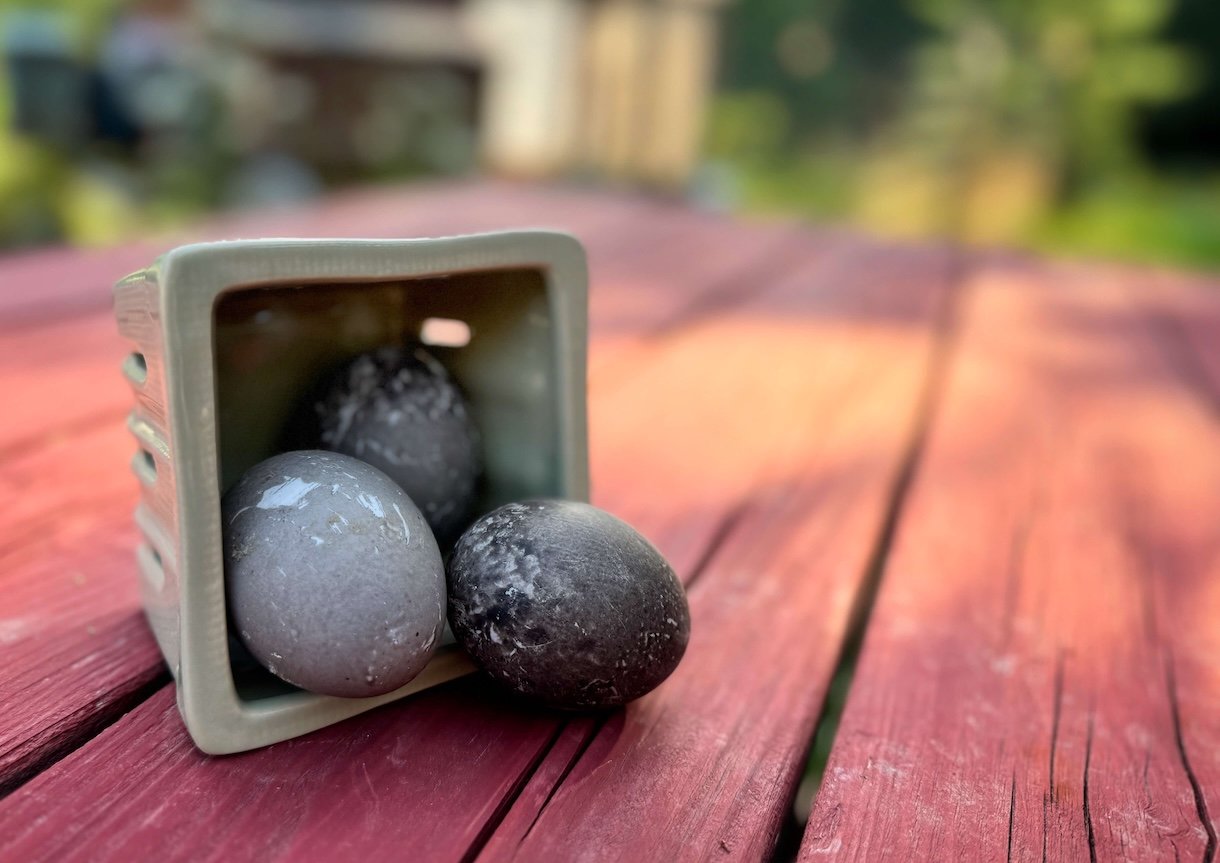Cayuga Ducklings
Origin: United States
Size: 6-7 lbs
Egg Size & Color: Large - Blue
Egg Production: 100-150 per year
Hardiness: Cold & Heat
Purpose: Eggs, meat
Personality: Docile, Calm
Free Range: Yes
Rarity: Watch on Livestock Conservation List
Orders are for Spring 2025 as Ducks are seasonal layers and won’t begin again until Feb/Mar
Origin: United States
Size: 6-7 lbs
Egg Size & Color: Large - Blue
Egg Production: 100-150 per year
Hardiness: Cold & Heat
Purpose: Eggs, meat
Personality: Docile, Calm
Free Range: Yes
Rarity: Watch on Livestock Conservation List
Orders are for Spring 2025 as Ducks are seasonal layers and won’t begin again until Feb/Mar
Origin: United States
Size: 6-7 lbs
Egg Size & Color: Large - Blue
Egg Production: 100-150 per year
Hardiness: Cold & Heat
Purpose: Eggs, meat
Personality: Docile, Calm
Free Range: Yes
Rarity: Watch on Livestock Conservation List
Orders are for Spring 2025 as Ducks are seasonal layers and won’t begin again until Feb/Mar
-
The Cayuga is recognized as one of the hardiest of the domestic ducks and their coloring is simply stunning. They tolerate the harsh winters of the Northeast since they are from New York and are great layers and mothers. This is a dual-purpose breed, meaning they are used for egg production and meat. The meat of the Cayuga is reputed to be of excellent taste and quality.
Cayuga ducks can lay 100-150 eggs per year that can be used for general eating and baking purposes. Eggs are initially black in color, but as the season progresses egg color lightens to blue-white by the end of the season. We have found that our eggs can be gray — just the first 2 then stay blue. The plumage of the Cayuga is uniformly greenish black and may become mottled with white as they age. They can eventually turn all white. We have several hens that are mottled and turning white, drakes seem to take longer to mottle. They are friendly, docile and generally quiet making an excellent addition to your flock. Cuyugas are a heritage breed and on the Livestock Conservancy List. Let’s help keep them going by doing our part. -
The Cuyuga history is unclear. The word “Cayuga” is the name of a lake in New York and one story is that a miller captured two wild, black ducks on his mill pond in Duchess County, New York, where Cayuga Lake is located. The miller pinioned the wild ducks, who promptly settled down and began producing copious offspring. This could be true but there is no evidence to back it up.
Another possibility is that the Cayuga originated from a black duck breed that was commonly found in Lacashire, England, but that has since disappeared because breeders preferred the Aylesbury duck. So,origin could be either one, a mystery.
The Cayuga was accepted into the American Poultry Association’s Standard of Perfection in 1874. The breed was a favorite with farmers until the 1890s when Pekins came to dominate the market. Cuyuga ducks are a part of the Livestock Conservancy heritage breeds and categorized under “watch”.
-
We recommend starting with our Chicken & Waterfowl Starter for the first 3 weeks, then duck and gosling grower till laying age. At laying age ducks use adult layer. Our feed includes grit and oregano oil for gut health. Fresh clean water needs to be available, grit to break down the feed and greens if not using Sugar Feather Farm feed and Oregano Oil in the water daily to help with gut health. Ducks can start to get grasses at 2 weeks with some other veggies.




















